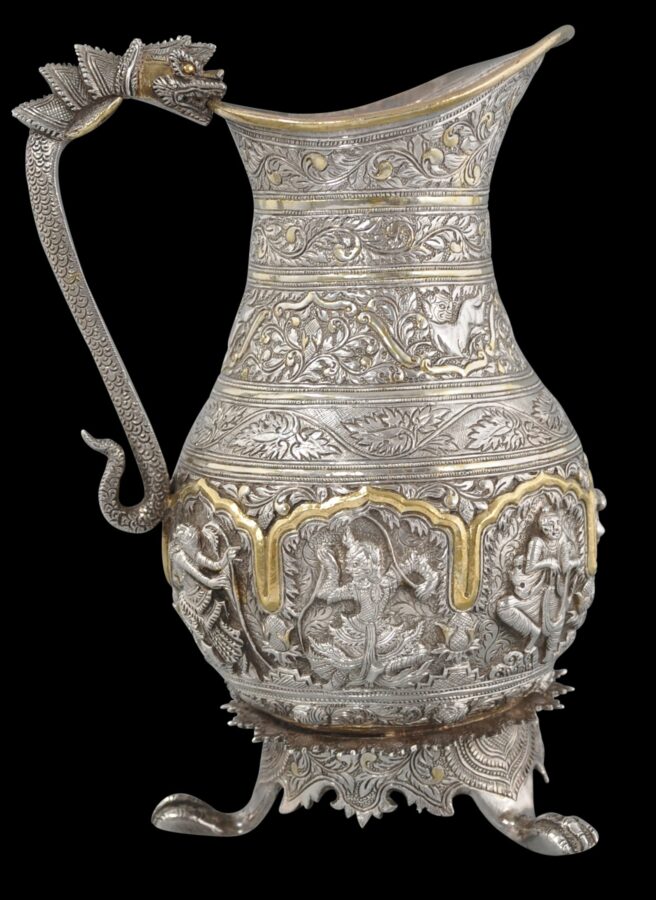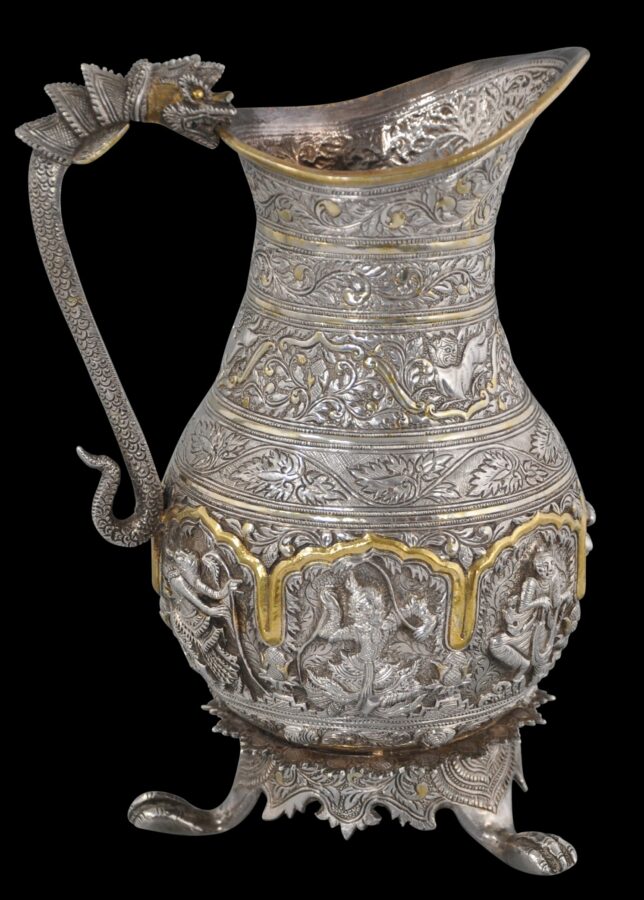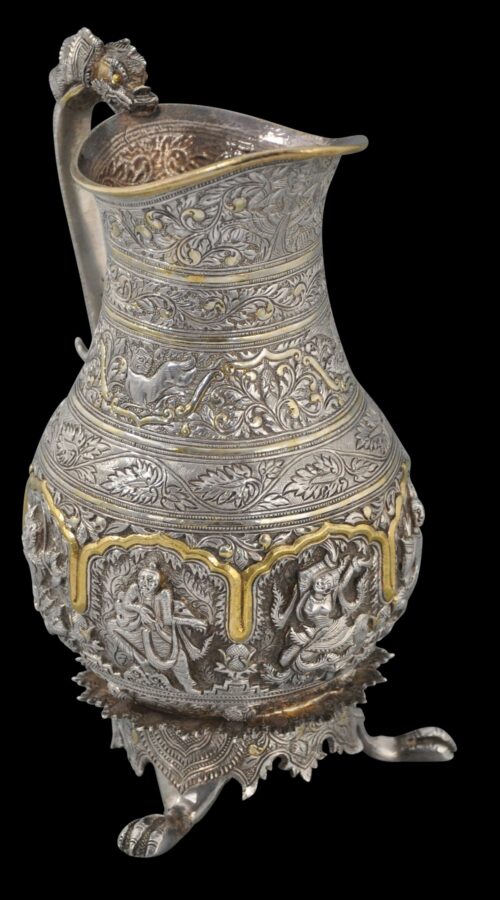This very fine example of colonial Burmese silverwork comprises a jug delicately chased and repoussed all over with figures clad in traditional Burmese dress, all in high relief, and delicate scrollwork which includes foliage and animals all in low relief. Unusually, many of the decorative elements have been highlighted in gold. Such parcel gilding is rare on a colonial Burmese piece although is occasionally seen on earlier Shan silverwork.
The base is engraved in elegant cursive script with the inscription: ‘made by Maung Aung Myat’. Such an inscription suggests that this piece was made for an exhibition. The British colonial authorities often held exhibitions of Burmese and other silverwork in Rangoon, India and in London and silver items were signed so there was no confusion as to the maker, which was particularly important when it came to awarding prizes, and returning pieces. Otherwise, Burmese silver is rarely signed by the maker in this manner.
Wilkinson (1999, p. 36) identifies Maung Aung Myat as a silversmith who operated in Thayetmyo (now Thayet, about 300 kilometres north-west of Rangoon and on the Irrawaddy River) and who worked some time between 1875 and 1910.
The jug stands on three splayed, zoomorphic feet, has a globular body, an elongated neck and an elliptical mouth and rim. An ‘S’-shaped handle cast and chased in the form of a naga or serpent also has been parcel-gilded.
The jug is quite large – probably too large to have been intended for milk – and so possibly was intended to serve as a small water jug.
The jug is in excellent condition.
References
Green, A., Burmese Silver from the Colonial Period, Ad Illisvm, 2022.
Wilkinson, W.R.T., Indian Silver 1858-1947, 1999.










